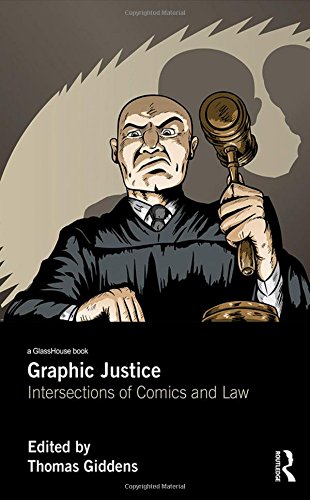

Most ebook files are in PDF format, so you can easily read them using various software such as Foxit Reader or directly on the Google Chrome browser.
Some ebook files are released by publishers in other formats such as .awz, .mobi, .epub, .fb2, etc. You may need to install specific software to read these formats on mobile/PC, such as Calibre.
Please read the tutorial at this link: https://ebookbell.com/faq
We offer FREE conversion to the popular formats you request; however, this may take some time. Therefore, right after payment, please email us, and we will try to provide the service as quickly as possible.
For some exceptional file formats or broken links (if any), please refrain from opening any disputes. Instead, email us first, and we will try to assist within a maximum of 6 hours.
EbookBell Team

5.0
68 reviewsEstablishing the medium of graphic fiction as a critical resource for interdisciplinary legal studies, this collection is the first to address the intersection of comics and law. Graphic fiction has gained enormous cultural capital and academic interest over recent years. Comics-inspired films fill our cinemas and superhero merchandise fills the shelves of supermarkets. In short, our culture is suffused with a comic-book aesthetic: as, for example, the ‘Occupy’ movement appropriates the mask of ‘V’, from the comic work V for Vendetta; and, tragically, as James Holmes’s murderous rampage through a Colorado movie theatre, seemingly sees him styling himself after Batman’s arch-nemesis, the Joker. From mass entertainment and consumerism to political activism and violence, we are surrounded by emanations of graphic storytelling. Meanwhile, the rise of academic disciplines such as comics studies demonstrates that the medium contains much more depth than the common assumption of its simplicity and juvenility might suggest. Against this background, comics offer an important resource for making sense of the contemporary place and role of law. Whether in their representations of lawyers and the legal system, their dystopian imaginations, their treatment of issues of justice and social order, or in their superheroic investment in the protection of the innocent and the punishment or capture of those who would harm them, like other narrative forms – literature, film, theatre – graphic fiction explores and expresses human life in all its social, moral and legal complexity. In the context of a now well-established interest in cultural legal studies, this book showcases the critical potential of comics and graphic fiction as a resource for interdisciplinary legal studies and legal theory.